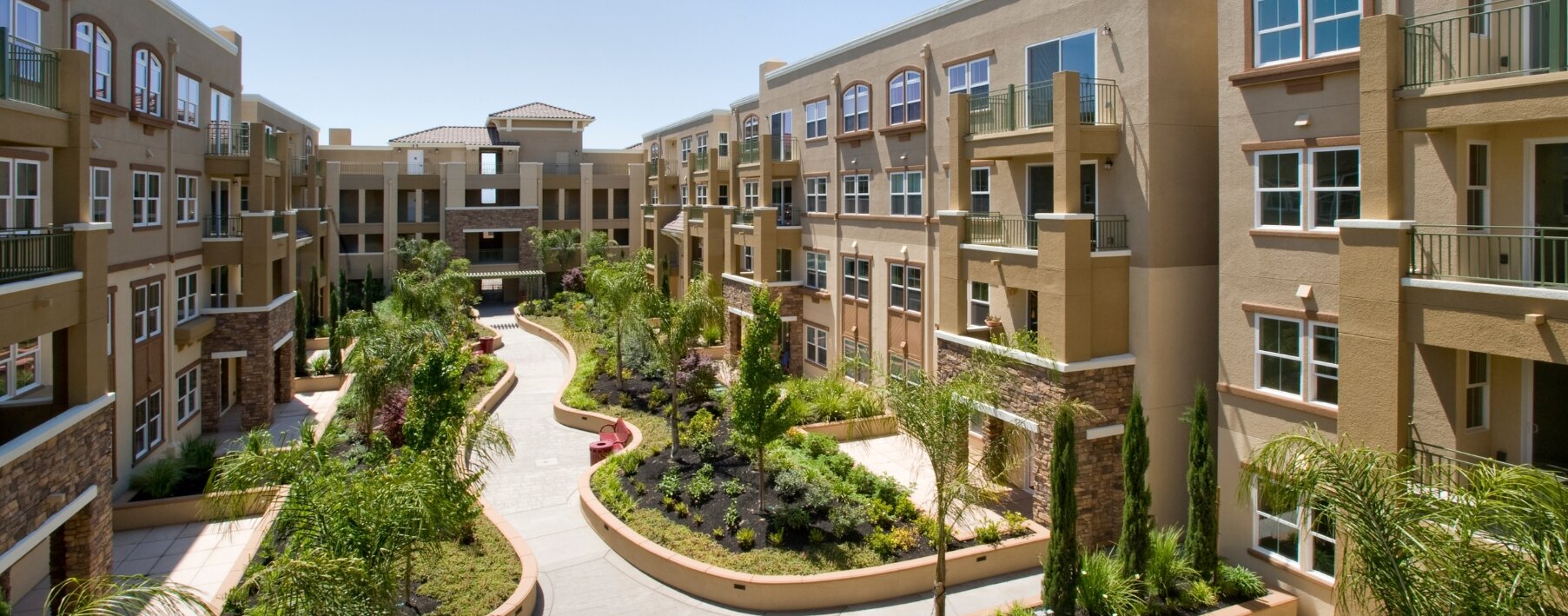How Much Homeowners Insurance Do I Need? [Get Covered]

A typical home insurance policy protects your home, your belongings and the people on your property in the event of a disaster. But have you ever wondered, “How much home/house insurance coverage do I need?” Events like lightning strikes, vandalism and fires might seem unlikely, but the last thing you want is to find out that you don't have enough coverage when you need it.
Key takeaways
- How much home insurance you need depends on the cost to rebuild your home, replace your belongings, cover injuries on your property, and maintain your quality of life if temporarily displaced.
- Your home insurance policy is split into several different parts, each with its own coverage limits.
- Your dwelling coverage should at least equal 100% of the cost it would take to rebuild your home.
- Your personal property coverage is typically 50% to 70% of your dwelling coverage, but inventory your belongings to see if you need a higher amount.
- Liability coverage starts at $100,000, but choose a limit that at least matches the total value of your assets (such as bank accounts, property, and investments).
- Additional living expense coverage is usually 20% of dwelling coverage and pays for temporary living costs after a covered disaster.
How to determine how much homeowners insurance I need
You should get enough home insurance to cover the cost of rebuilding your house if it's destroyed. Your policy should also cover the value of your belongings inside the house, as well as your liability if someone gets hurt on your property.
To determine how much home insurance you need, ask yourself the following questions:
- How much would it cost to rebuild my home? (dwelling coverage)
- How much would it cost to replace my personal belongings? (personal property coverage)
- How much would injuries on my property cost? (liability coverage)
- How much would it cost to live somewhere else temporarily and maintain my quality of life? (additional living expense coverage)
Below, we’ll show you how to answer these questions when wondering, "How much coverage do I really need for homeowners insurance?” To learn more, take a look at our guide on the average cost of homeowners insurance.
How much dwelling coverage do I need?
💡 How much coverage you need: At least enough to cover 100% of the cost to rebuild your home (known as replacement cost).
Dwelling coverage allows you to rebuild your home and other structures (like garages, sheds, fences, porches and decks) in the event of a disaster. Assess these factors when considering "How much should I insure my house or home for?":
- Minimum coverage. Many companies require you to have dwelling insurance that covers 100% of your property’s replacement cost. Your home's replacement cost is different from its market value. Replacement cost depends on local construction costs, your home's features, and updated city ordinances. Market value is how much you would sell it for, including land. Your replacement cost may be higher or lower than your home’s market value.
⚡Expert tip: A quick way to calculate replacement cost and how much property insurance you need is to multiply the square footage of your home by local construction costs per square foot (which can be found on construction websites). However, you should speak to a Hippo insurance agent to answer specific questions about your home’s replacement cost.
In some cases, you may need one of these coverages instead of replacement cost coverage:
- Ordinance or law coverage. New city building codes can significantly impact your home's replacement cost. If you live in an older home with outdated electrical wiring, plumbing, or materials, ordinance and law coverage can take care of these increased costs when you have to rebuild.
- Extended replacement cost. Sometimes, even if you insure your home for 100% of its rebuild cost, labor or construction materials may unexpectedly rise after a disaster. With extended replacement cost coverage, your insurer may pay up to 105% or 125% of your dwelling coverage amount so you have enough to rebuild.
- Inflation guard. If you plan to live in your home for an extended period, you may want an inflation guard. As the name implies, this adjusts your policy to account for increased construction costs over time so you have the right amount of coverage you need. (Hippo recalculates your home’s full rebuilding cost every year to make sure that your coverage remains accurate.)
How much personal property insurance coverage do I need?
💡How much coverage you need: Typically 50% to 70% of your dwelling coverage limit.
Personal property coverage protects your belongings (on or off your property) against certain common disasters like lightning, fires, windstorms, explosions, theft and vandalism, among others. How much coverage you need depends on the value of your personal items.
⚡Expert tip: As a good baseline, most homeowners insurance policies include personal property coverage that is about 50% to 70% of your dwelling coverage, according to the Insurance Information Institute. But you may need more coverage if you have more items in your home than average, or if any of your items are particularly valuable.
You can follow these steps to figure out how much home insurance coverage you need:
- Inventory your belongings. Go room by room and take pictures or videos of everything. (You’ll need this if you file a claim!) Note the makes and models of technology. Store digital copies of any receipts you have in Google Drive or a receipt-scanning software like Zoho or Quickbooks.
- Estimate each item’s worth. Pay special attention to expensive items like laptops, smartphones and jewelry. Policies typically set sub-limits on what will be paid for these items if they’re destroyed, so you may need higher limits.
- Choose your coverage type. Decide if you want to insure your items for their actual cash value (how much they’re worth now, after depreciation) or their replacement value (how much it would cost to buy them brand new).
How much liability coverage do I need?
💡 How much coverage you need: At least $100,000 or enough to cover any assets you have.
Liability insurance coverage shields you from medical payments, lost wages, legal fees, funeral costs and other costs associated with injuries on your property.
Typical plans provide at least $100,000 of liability coverage, but it’s recommended that you purchase as much coverage as you need to fit your current needs.
For example, suppose you have investment accounts, bank accounts, property, and other assets that total $1 million or more. In that case, you might consider umbrella coverage, which provides liability coverage beyond your standard policy. If you have less than $500,000 in assets, a standard policy may be enough.
How much additional living expense coverage do I need?
💡 How much coverage you need: Usually, 20% of your dwelling coverage amount
Additional living expense coverage, also known as loss of use coverage, picks up many of the costs you might face if you can’t live in your home while it’s being rebuilt after a disaster. For instance, it can help pay for:
- Eating out if your kitchen is destroyed and you can't cook
- Hotel stays if you can't sleep in your bedroom
- Storage costs for your belongings
- Moving expenses
- Laundry services
So, how much home insurance coverage should I get? It’s common for policies to include additional living expense coverage that is up to 20% of your dwelling coverage.
For many families, this percentage is enough, but if you have a large family or other specific needs that might increase the cost of living, you might consider extending your limits. Some insurance companies have unlimited loss of use coverage.
Factors that impact how much home coverage you need
Several things can influence how much homeowners insurance you need to get:
- How much it costs to rebuild your home. At a minimum, make sure you insure your home for its replacement cost, which is the amount it would take to rebuild your home from scratch rather than its market value.
- How much it would cost to replace your belongings. Take inventory of your belongings and estimate their total value. Most policies offer personal property coverage that is 50% to 70% of your dwelling coverage, but you may need more if you have valuable items like jewelry, art, or electronics.
- Your liability risk. If you have a pool, host frequent gatherings, or have a high net worth, you may need higher liability limits than the standard $100,000 many policies provide.
- Your deductible. Your deductible is the amount you pay per policy year before insurance kicks in. A higher deductible generally means lower premiums, but make sure you have enough savings to cover it if needed.
- Your location risks. Your home's location can impact the types of coverage you need. For example, you may need extra coverage for these events if you live in a flood or earthquake zone.
Consider additional coverage options
People are often surprised that floods, earthquakes, sewer backups, sinkholes, certain mold problems and other disasters are not covered by standard homeowners insurance.
Take a close look at your plan to understand what it does and doesn’t include. If you find you have less home insurance than you need, consider adding on any of these additional coverages:
- Flood insurance. You’ll need separate flood insurance if you live in a flood-prone area, according to the Federal Emergency Management Agency (FEMA).
- Earthquake insurance. Visit the United States Geological Survey (USGS) website and check the seismic hazard maps to see if you need to insure your house with earthquake coverage.
- Sewer backup coverage. Many people believe standard policies cover sewage backups when they don’t. You may want this coverage if your property has a sump pump or if sewer issues are common in your area.
- Equipment breakdown coverage. Standard policies don’t cover broken appliances or HVAC issues. However, with this coverage, you can fix any electrical or mechanical breakdowns caused by these appliances.
- Mold insurance coverage. Some policies provide limited coverage for mold damage, but you may want to extend these limits if you live in a humid area or have had previous mold issues in your home.
- Valuable items coverage. If you have fine jewelry, collectibles or other high-value items, you may want to purchase scheduled personal property coverage so they’re not underinsured.
- Home office coverage. If you have a home-based business, you may need additional insurance to cover any work-related equipment, inventory, or liability you have.
⚡Expert tip: Your home is where you make happy memories with your family. That's why it's important to protect it and all of your belongings sufficiently should a disaster occur. Determine exactly how much coverage you need with a home insurance quote from Hippo, which is available in 60 seconds.
Still have questions?
Still wondering about how much home insurance you need? These frequently asked questions may help you gain some clarity.
Does homeowners insurance cover home renovations?
Home insurance pays to restore your home to its original state. This means that if your home is damaged or destroyed by a covered peril, like fire or a windstorm, your homeowners insurance will cover the cost to repair or rebuild it to its pre-loss condition. However, it won't pay for any upgrades or improvements if you renovate while your home is being rebuilt.
Do I need more home insurance coverage with every passing year?
You may need more home insurance if you’ve made upgrades or changes to your home. But even if nothing has changed, you should review and update your policy limits each year based on local labor and material costs in your area. Due to inflation, you may find that your home insurance premiums increase each year, even if your home is still exactly the same.
How much does homeowners insurance usually cost?
Annual home insurance premiums cost $2,377 in 2023 and are projected to be $2,522 on average by the end of 2024, according to recent data from Insurify. If you live in a state with severe weather, your costs could be even higher. For instance, in Florida, homeowners paid $10,996 on average in 2023 to get the amount of home insurance they need.
How much home insurance is required by mortgage lenders?
Most mortgage lenders require you to carry at least enough home insurance to insure 100% of the replacement cost of your home. So, if it’s estimated to cost $400,000 to rebuild your house from the ground up, that’s how much coverage for home insurance you need.



